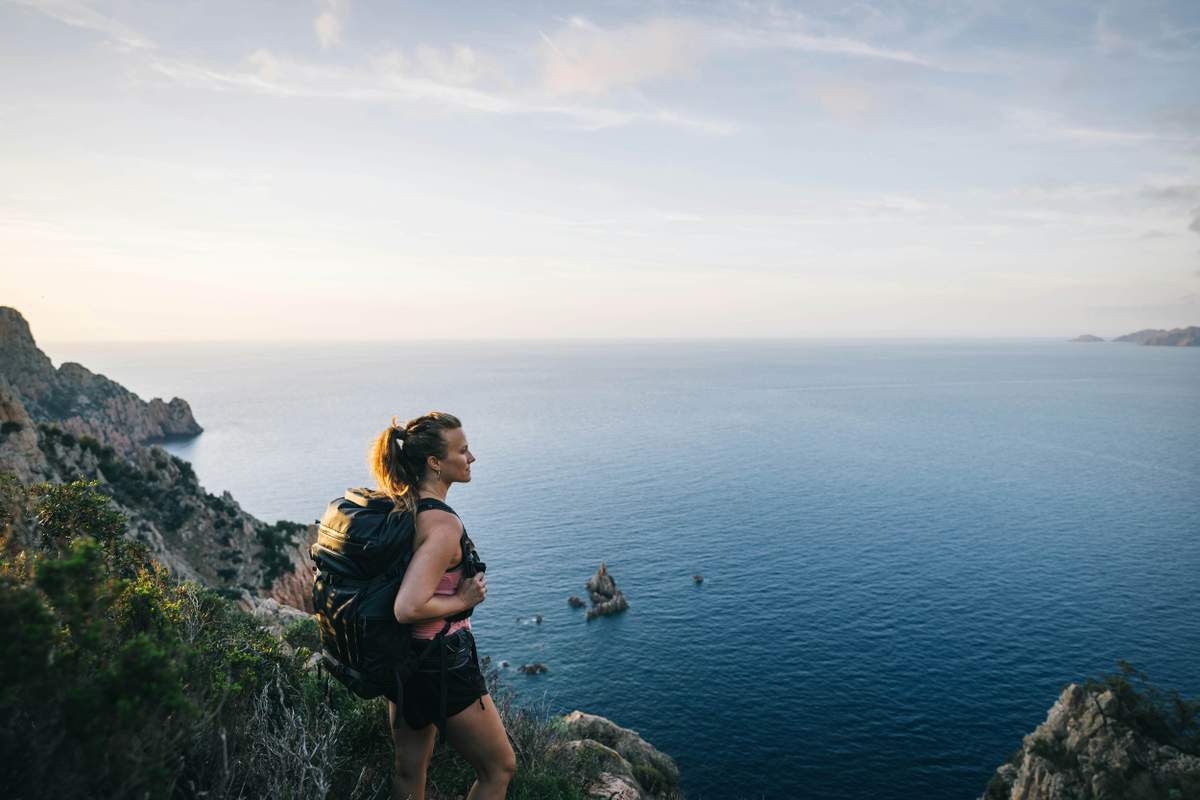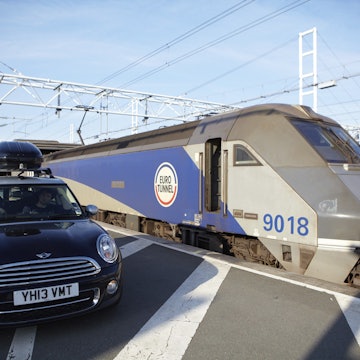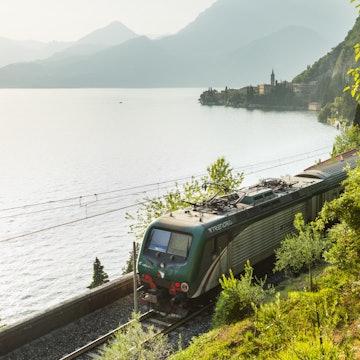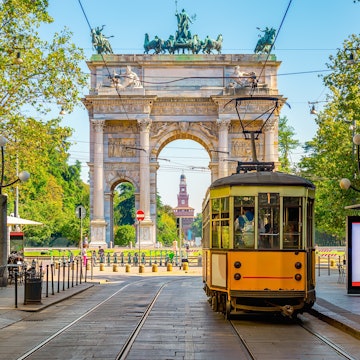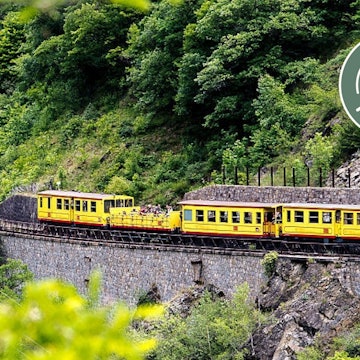
Crossing Corsica on the "little train" is the best way to see its spectacular scenery

Apr 28, 2023 • 5 min read

The U Trinighellu traverses Corsica's beautiful coastline as well as its mountains. © Paolo Picciotto/REDA&CO/Getty Images
Our slow travel series explores how you can take more mindful journeys by train, boat, bus or bike – with tips on how to reach your no-fly destination, and what to see and do along the way. We asked Anna Richards to report on her recent train trip across the rugged mountains of Corsica.
The little train made heavy weather of the climb into the Corsican mountains. I sympathized: my legs were still recovering from covering a similar route on foot, 180km of knee-busting ascents and descents over the last two weeks hiking the GR20.

“U Trinighellu” sounds ethereal – yet simply translates to “Little Train.” The main line runs for 158km between Ajaccio, Corsica’s capital, and Bastia, its second city, on the northeastern coast. I was to alight a few stops earlier at Ponte-Leccia then take the coastal line to the medieval port town of Calvi, where my car and a bag full of clean clothes awaited me.
Although the train itself has been modernized since the line first opened in 1879, the railway line feels like a journey through time – or at least back to the days before modern health and safety regulations. Everywhere I looked were vertiginous drops into arid gorges. Hardy, scrubby trees clung at odd angles to the rocky walls.
The railway line was originally planned in 1855 as part of a route to cross both Corsica and Sardinia, with the Corsican section linking Bastia in the north with Bonifacio at the southernmost tip of the island. As with so many railways, colonialism spurred its development: Napoleon III believed it would mean shorter travel times for passengers and cargo traveling between France and Algeria, which was under colonial rule at the time. The train never made it as far as Bonifacio, finishing in Ajaccio instead.

In 1959, the French minister of transport Robert Buron tried to close the railway line, saying that “cars and five buses” would suffice for transport in Corsica. This met with outcry from the islanders, who – while staunchly “not French” – certainly knew how to strike like those on the mainland. The future of the line was uncertain for decades, and even now, hikers and students from Corsica’s sole university make up a large percentage of the passengers.
Yet it remains one of the best ways to see the island – especially in spring and summer, when Corsica’s landscapes put on a full-color display.
Departure
I knew that traveling by road would have shaved at least an hour off my journey, but it would have also skirted around the bony spine of the Corsican mountains. So I boarded the train in Ajaccio, scabby kneed, clad in smelly clothes and carrying an even smellier hiking pack. As we began the laborious climb and I watched the bustling metropolis of Ajaccio disappear (the population is a little over 60,000, but after a fortnight in the wild it seemed like Delhi to me), I remembered the first time I’d heard about the mountain railway, from a family friend who had visited Corsica in the 1980s. Her train had derailed and out they tumbled – tourists, locals and more than a few chickens – to be stranded for several hours in the Corsican wilderness. Fortunately, no such adventure was in store for my journey.

The journey
The periwinkle blue of the Mediterranean fell out of sight, replaced with fang-like peaks silhouetted against an equally blue sky, rising and falling haphazardly as though they’d been scrawled by a toddler. We crossed over precarious-looking iron bridges and passed remote mountain villages with church spires as skinny as toothpicks. The train seemed to roll with the landscape.
After one particularly long tunnel (one of 32 on the Ajaccio–Bastia mainline), the train ground to a halt in Vizzavona. It was a familiar sight, as I’d camped here less than a week earlier. Vizzavona marks the divide between the harsher, northern half of the GR20 and the (comparatively) softer south. It’s also one of the few places on the trek with a grocery store. On foot, I’d paid more attention to the Snickers bars than to the terracotta-roofed station.

A vertiginous downhill stretch took us on to Corte. Many young Corsicans head to the mainland to study, but since the island’s one university still has over 4000 students, several people tumbled in and out here. Two stops later and lower still, we arrived in Ponte-Leccia. A rail crossroads, it was an underwhelming station for Corsica’s answer to Clapham Junction, with no coffee to be found. I got out and stretched my legs before boarding an identical train to the coast.
The arrival
Just before L’Île-Rousse the sea reappeared and we began to hug the coast. Many beaches that we passed were completely empty, others occupied by a handful of topless sunbathers. The final leg of the journey took just under two hours. A car would have done it in half the time, but I was happy not to have flown past these views.
A tiny sandcastle of a town, Calvi rose among lemon-colored walls and jutted out into the sea on the northwestern fringe of the island. It was time to soak my aching limbs in the Mediterranean.

Tickets
Trains between Bastia and Ajaccio run three to six times daily in each direction depending on the season, with the Ponte-Leccia–to–Calvi leg having two to three departures daily. A one-way ticket from Bastia to Ajaccio starts from €21.60; a week-long train pass for the entire island runs €50. Full timetables and fares can be found here.
Food and drink
There’s no buffet car on board, so we advise packing your own picnic.





